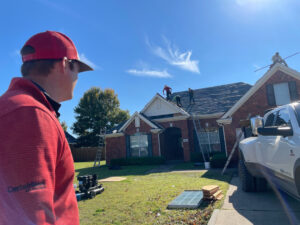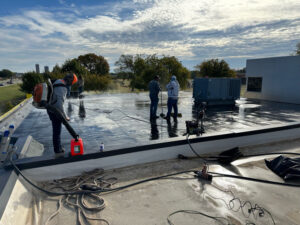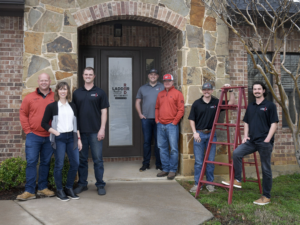Glossary of Roofing Terms
It’s important to be an informed consumer.
How else will you know whether your roofer is the real deal?
This roofing glossary will help you understand the terms and phrases that you might hear when talking to your roof contractor.
Understanding Roofing Terminology
You may encounter industry terms used by your contractor when discussing your roofing project. You can ask your contractor to clarify any ambiguities, but it is helpful to have a reference guide.
Check out our glossary on roofing to learn more about the meanings of common residential roofing terms.
Algae Coloration – This is a type of roof discoloration that is caused by algae. It is often mistakenly called fungus growth.

ARMA – The Asphalt Roofing Manufacturers Association is a trade organization for North American asphalt roofing manufacturers.
ASTM International – A voluntary association that works to develop consensus standards, specifications and testing procedures.
Asphalt – A bituminous waterproofing product that is applied to roofing materials during manufacturing.
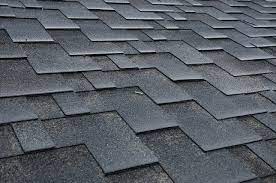
Asphalt Primer – A thin liquid bitumen that is applied to a surface in order to increase adhesion and absorb dust.

Asphalt Roof Cement – An asphalt-based cement that bonds roofing materials. Also called flashing cement, mastic, and should comply with ASTM D4586 (Asbestos-Free).

Architectural Shingles – See “Laminated Shingles”.

Back Surfacing – Fine mineral matter applied to the back of shingles to prevent them from sticking together.
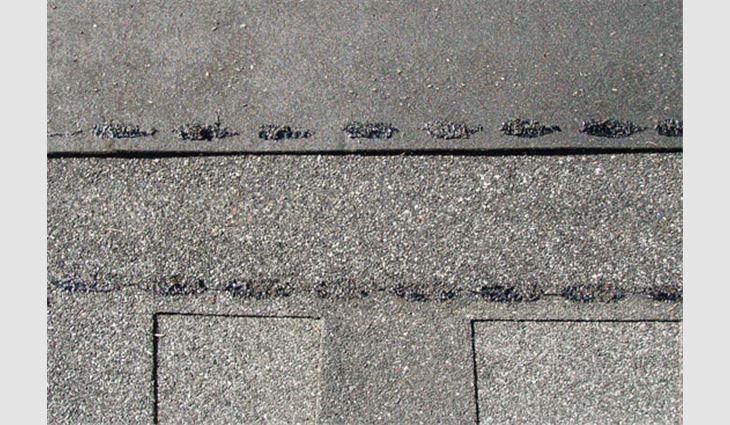
Base Flashing – This flashing is attached to the deck or resting on it to direct water flow onto the roof covering.
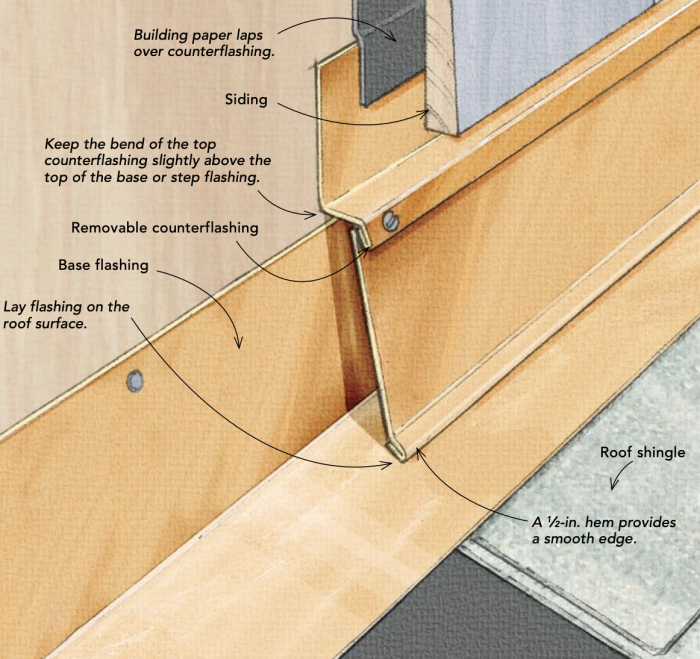
Base-ply Sheet – This product is intended to serve as the base or middle layer in a residential self adhesive roll roofing system.

Base Sheet – A product that is intended to be used in a self-adhering rolling roofing system as a base sheet.
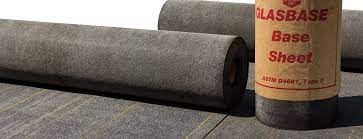
Blisters – After installation, blisters may form on asphalt roofing.

Bridging – A method for roofing with metric-sized shingles.
Built-Up Roof – Flat or low-sloped roof made of multiple layers of ply sheets embedded into hot asphalt.
Bundle – A bundle of shingles. There are usually 3-5 bundles per square.
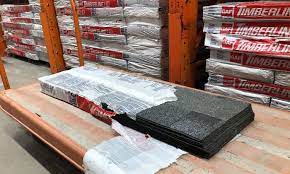
Butt edge – The lower edge between the shingle tabs.

Cap Sheet – A mineral-surfaced material that can be used as a single layer or as the top of a multi-layered rolled roof covering.

Caulk – Used to fill joints with asphalt cement or mastic to stop leaks.

Cement – See “Asphalt Roof Cement”.
Chalk Line – A line created on the roof using a taut string, or cord dusted in chalk. This is used for alignment purposes.

Class A Fire Resistance – This is the highest fire classification for roofing according to ASTM E108 and UL790. This indicates that roofing can withstand extreme fire from outside sources.
Class B Fire Resistance – This classification indicates that roofing material can withstand moderate fire from outside sources.
Class C Fire Resistance – This classification indicates that roofing material can withstand light exposure from fires originating outside.
Class 4 Impact Resistance – The highest classification of impact resistance according to the UL 2218 Impact Test. This indicates that shingles are more resilient to impacts from hailstorms.
Closed Cut Valley – This is a method for treating the valley. Shingles from one side extend across the valley, while those from the opposite side are cut 2 inches from the valley centerline. Valley flashing is not visible.
Collar – A pre-formed flange that is placed over a vent pipe to seal the roof and vent pipe openings. Also known as a vent sleeve.

Concealed Nail Method – Method of roll roofing where all nails are driven into roofing’s underlying course and then covered with a cemented, overlapping roof. This prevents nails from being exposed to the elements.
Condensation – The conversion of water from vapor into liquid when warm, moist air is in contact with cold surfaces.
Counter Flashing – This is the portion of the flashing that’s attached to a vertical surface in order to stop water from escaping behind the base flashing.

Course – A row or roll of roofing that runs the length of the roof.
Coverage – The number of layers between the roof and the deck.
Cricket – A saddle-shaped structure at the back side of a chimney that prevents accumulation of snow or ice and deflects water around it.
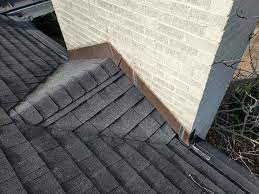
Cutout – The open areas of a strip-shingle that are between the tabs.
Deck – The surface which is installed on the supporting roof framing elements. The shingles are placed over the deck. A wood deck must be at least 15/32 inches thick.

Dormer – A framed unit that projects through the sloped roof plane.

Double Coverage – Asphalt roofing that is more than 2 inches wider than the exposed part. This results in two layers of roofing material on the deck.
Downspout – A pipe that drains water from roof gutters. Also known as a leader.

Drip Edge – A non-staining, corrosion-resistant material that is used to cover rakes and eaves to allow water to run off the construction.
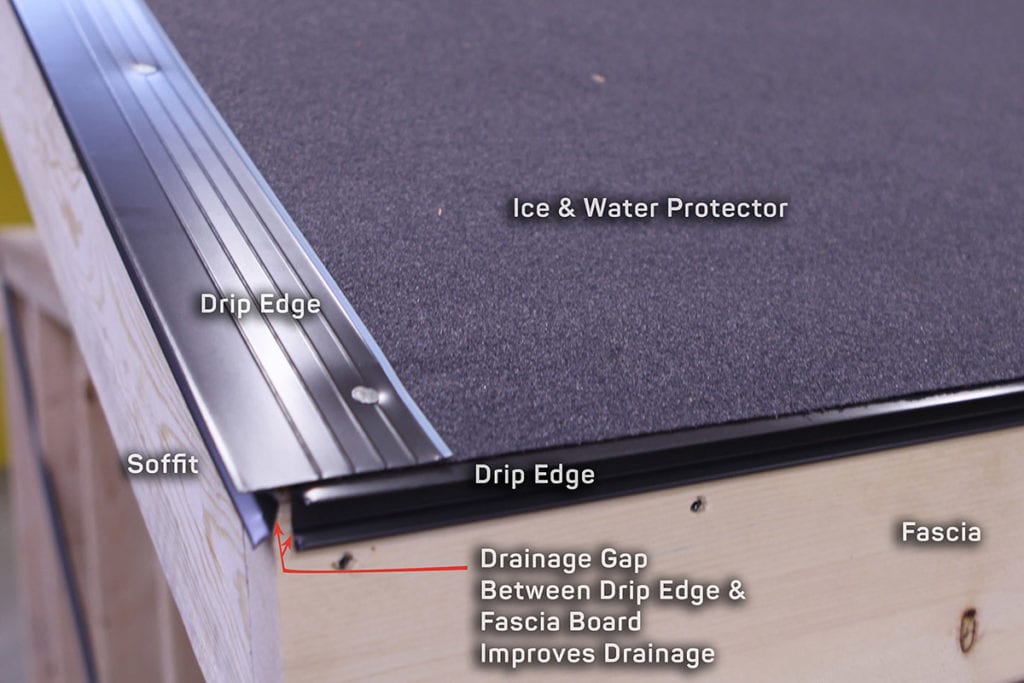
Edge – A horizontal, lower edge on a sloped roof. (See Figure B.).
Eave Flashing – An additional layer of roofing material is applied to the eaves in order to prevent water damage.
Exposed Nail Method – Method of roll roofing is where all nails are driven into the cemented roofing. The weather is not protected from nails.
Exposure – The area of the roof that is exposed to the elements after installation. (See Figure A.).
Felt – Fibrous material that has been saturated with asphalt. It is used underlayment or sheathing papers.

Fiberglass Mat – The core material of an asphalt roofing shingle made from glass fibers.
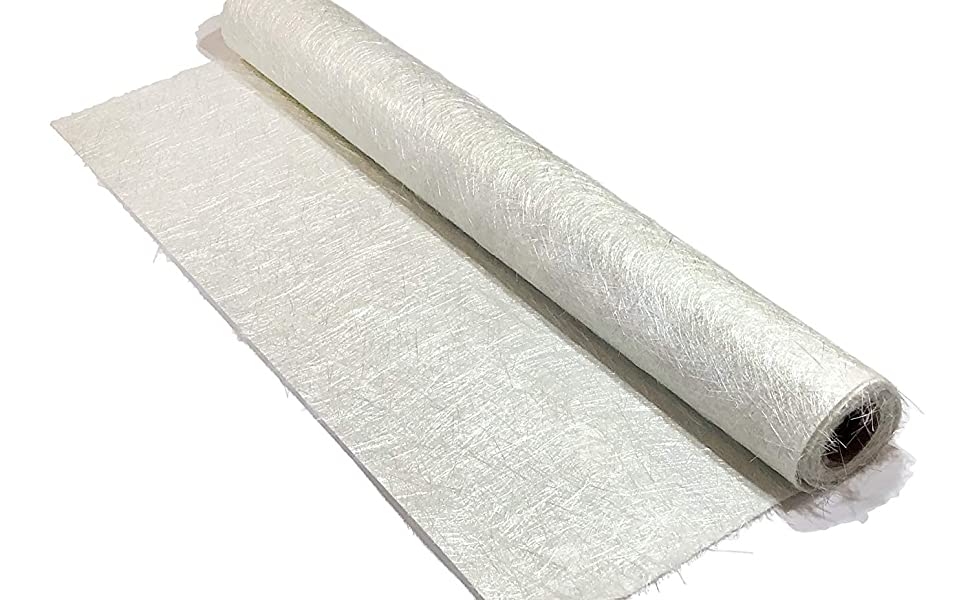
Flashing – Metal pieces used to stop water seepage from buildings around roof projections such as chimneys, vent pipes, vent pipes, valleys, dormers, and valleys. Galvanized metal flashing should not exceed 26 gauge.
Flashing cement – See “Asphalt Roof Cement”.
Gable – The triangular upper portion of a sidewall reaching a point at a ridge of double-sloped roof.

Gable Roof – A simple, two-sided roof that is above a Gable.
Gambrel Roof – A roof that has two sloped planes with different pitches on either side of the ridge. The slope of the lower plane is steeper than that of its counterpart. Each end has a gable.
Granules – Typically, this is a colored crushed rock coated with ceramic that is used to cover asphalt roofing products.

Gutter – The trough that transports water from the eaves to downspouts.
Head Lay – The shortest distance between the butt edge and the top edge of an over-shaded shingle and the upper edge of the shingle in the course below. Triple coverage of the top lap made of strip shingles. (See Figure A.
Hexagonal Shingles – Shingles with the appearance of a hexagon following installation.

Hip – An inclined external angle created by two sloped roof planes. From the ridge to eaves. (See Figure B.

Hip Roof – A roof that has sloping planes at each of its four sides. Contains no gables.
Hip Shingles – Shingles used to cover an inclined external angle created by two sloped roof planes.

Ice Dam – A condition formed at the lower roof edge from the thawing of melted snow. Leakage can occur when ponded water is forced up and under the shingles.
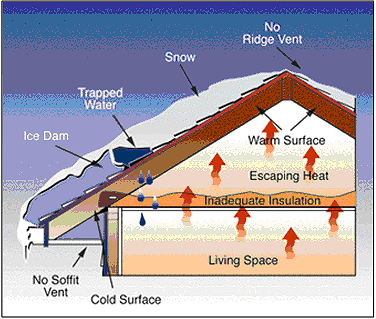
Ice Dam Protection – A course of self-adhering, underlayment placed at the eaves to protect against water damage caused by an ice dam. Also called “Eave Flashing”.
Impact Resistant Shingles – Shingles that have been specifically designed to resist hailstorm impacts. Typically, impact resistant shingles are tested according to UL 2218. Class 1 through 4 can be assigned. Class 4 indicates the highest level of impact resistance.
Interlocking Shingles – Individual shingles that mechanically attach to one another to provide wind resistance.

Laminate Shingles – Shingles with more than one layer that add thickness. Also known as three-dimensional shingles or architectural shingles.

Lap – To cover one shingle with another.
Lap Cement – is an asphalt-based cement that conforms to ASTM D3019. It’s used to attach overlapping rolls of roll roofing.
Low Slope Application – Method for installing asphalt shingles on roof slopes between 2″ and 4″.
Mansard Roof – A roof that has two sloped planes with different pitches on each side. The pitch of the lower plane is often steeper than that of its counterpart, and can even be considered vertical.
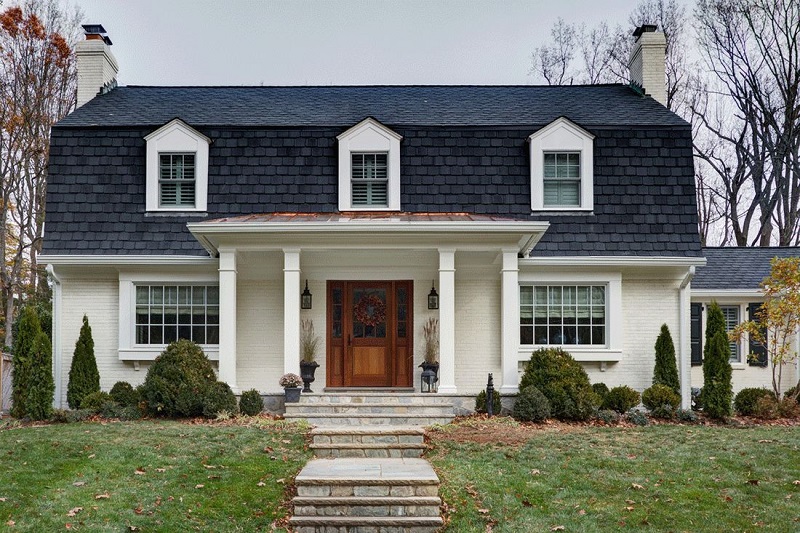
Mastic – See “Asphalt Roof Cement”.
Midply Sheet – See “Base-Ply Sheet”.
Mineral Stabilizers – Finely ground limestone and slate are added to asphalt shingles to increase durability and resistance to weathering and fire.
Mineral-Surfaced Roof – Roll roofing and asphalt shingles that have granules.
Nesting – A method to re-roof old asphalt shingles with new asphalt shingles. The top edge of new shingle is bounded against the bottom edge the existing shingle tab.
No-Cutout Shingles – Shingles made up of one solid tab without any cutouts.
Non-Veneer Panel – Any wood-based panel without a laminated veneer that carries an APA span rating such as wafer board, oriented strand board, or wafer board.
Open Valley – This is a method of building a valley. Shingles are cut along a chalk line and placed on either side of the valley. Shingles are not extended across the valley. Valley flashing can be seen.

Organic felt – An asphalt roofing material made from cellulose fibers.
Overhang – The portion of the roof that extends beyond exterior walls of buildings.
Pallets – Wooden platforms for shipping and storing bundles of shingles.
Ply – A layer for roofing (i.e. one-ply or two-ply).
Ponding – The accumulation of water following rainfall on low-lying roof areas that remain wet after other roof parts have dried.
Primer – An asphalt-based primer that prepares surfaces for bonding with self adhesive asphalt sheets.
Racking – This is a method of roofing application in which shingle course are applied vertically to the roof.
Rafter – The supporting framing member directly beneath the deck, sloping downwards from the ridge to wall plate.
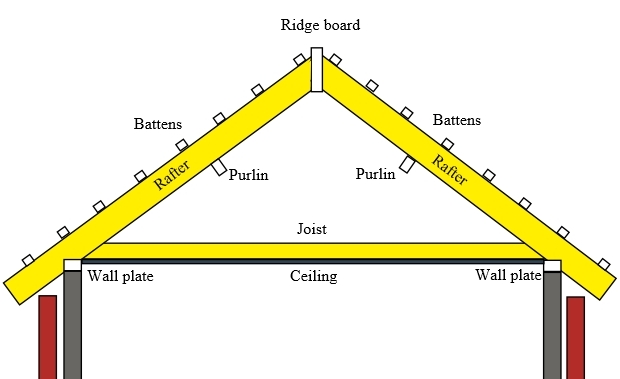
Rake – An inclined edge of a roof that slopes over a wall.

Random Tab Shingles – Shingles that vary in size or exposure.
Recovering – Adding an additional layer to a layer of roofing. Roofs can have up to two layers of any type of roofing.
Release Tape – A strip of plastic that is applied to the backs of self-sealing roofing shingles. This prevents shingles from sticking together and can be used for applications.
Reroofing – is the process of removing roof coverings and installing a new roofing system.
Ridge – The highest horizontal angle created by the intersection two sloped roof planes. (See Figure B.
Ridge Shingles – Shingles were used to cover horizontal angles formed by two sloped roof planes intersecting.
Rise – Vertical distance between the eaves and the ridge.
Roll Roofing – Asphalt roofing products made in roll form.
Roofing Tape – An asphalt-saturated adhesive tape that’s used with asphalt cements to flash and patch asphalt roofing.
Run – The horizontal distance between the eaves and a point under the ridge. Half of the span.
Saturated Felt – A asphalt-impregnated felt that is used to underlay the roof and deck.
Styrene-Butadiene-Styrene (SBS): A synthetic polymer that is mixed with asphalt in some products to increase the flexibility and other attributes of the products.
Self-Adhering Shingle Underlayment – This waterproofing underlayment is self-adhering and can protect from water infiltration caused by ice dams and wind-driven rain. This category of products must meet ASTM D1970 standards and have a label indicating this.
Self-Sealing Shingles: Shingles that contain factory-applied strips of self-mending adhesive or spots.
Self-Sealing Strip, or Spot: A factory-applied adhesive that bonds shingle course together when exposed to heat from the sun.
Selvage – The portion of roll roofing that is covered by the subsequent courses to achieve single or double coverage at each lap.
Shading – Slight differences in the shingle color due to normal manufacturing processes.
Shed Roof – A roof with only one slope. Does not contain hips, ridges valleys or gables.
Single Coverage – This asphalt roofing system provides one layer of roofing material on top of the deck.
Slope – The slope of a roof. It is the ratio of the rise to the run in inches. A roof slope of 4/12 would have a 4 in increment every 12 inches.
Smooth-Surfaced Roof – A roll roofing system that uses ground talc and mica as opposed to granules.
Soffit – The underside of the eaves.
Soil Stack – A vent pipe that penetrates the roof.
Span – is the horizontal distance between eave and eave.
Square – A unit for measuring 100 square feet of roof area.
Square Tab Shingles – Shingles that have the same size and are exposed to all tabs.
Standard Slope Application – Method for installing asphalt shingles on roof slopes from 4″ to 21″.
Starter Strip – This is an asphalt roofing application at the eave. It provides protection through the addition of material beneath the joints and cutouts of the first course.
Steep Slope Application – Method for installing asphalt shingles on roof slopes greater that 21 inches per foot.
Step Flashing – Flashing used when a vertical surface meets an inclining roof plane.

Strip Shingles – Asphalt shingles made of a single layer approximately three times longer than their width.
Synthetic Underlayment – A synthetic underlayment that is usually made from polypropylene. It is an alternative to felt underlayment.
Tab – The strip shingles exposed by cutouts. (See Figure A.
Tear Off – To tear down an existing roof system to the structural deck.
Telegraphing – Shingle distortions that can occur when a roof is placed on an uneven surface.

Three Dimensional Shingles – Refer to “Laminated Shingles”.
Top Layer – The roof portion that is covered by the subsequent courses after installation. (See Figure A.
UL – Underwriters Laboratories, LLC
UL label – This label is placed on packaging to indicate asphalt roofing’s fire- and wind resistance.
Underlayment – A layer of asphalt saturated felt or a specially engineered synthetic material that is used underneath roofing to provide extra protection for the deck.
Valley – The internal angle created by two sloped roof planes intersecting. (See Figure B.).
Vapor Retarder – Any material that prevents water vapor from passing.
Vent – Any air outlet that extends through the roof deck, such as a stack or pipe. A device that ventilates the roof deck’s underside, such as a gable, soffit or roof.
Woven Valley – This is a method of building a valley. Shingles from either side of the valley are laid across the valley, and then woven together using alternate tracks. Valley flashing is not visible.
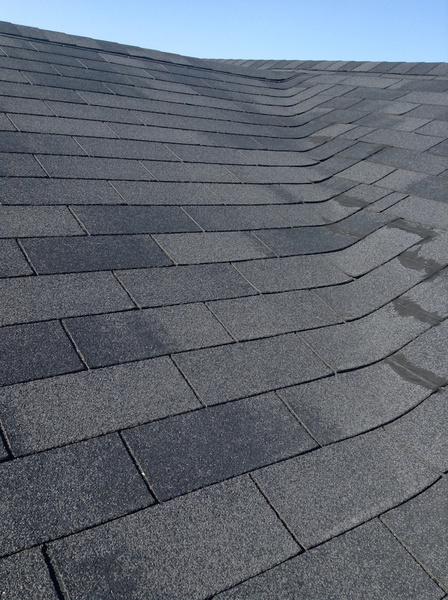
We hope that this glossary helps you understand your roofing contractor and make the right decisions when replacing your roof.
If you have any questions, please call us.
